boundary/entrance to the vege garden area, giving it better definition. The narrowest point between a caravan and out building is the place I wanted to put it - but the distance across was still close to 7 metres. To create a fence with arch and gate over that length can cost a lot of $$$! Plus I wanted an edged raised garden along both sides of the fence. This ended up costing me $179, even though I used a lot of free materials. But, it's an important part of the "infrastructure" of my garden. Here's how I created the finished set up you see above....
2x 2.7m 100x100 posts = $35.53
1x 3m 100x100 post, cut in half to make one end post and top of arch = $18.63
1 sheet 4.65x1.97m steel mesh = $38.36
1 waratah, repurposed from a defunct fence = free
3 branches trimmed from trees = free
Bricks to surround garden, from Freecycle = free
Slats to make gate, left over from free materials collected from local building company for son's woodworking projects = free
1/2 Pottle of screws to put together gate: $4.99
Nails & fencing staples: $8.00
Butterfly catch for two way opening: $22.14
Gudgeon hinges and plates: $33.98
Screws and washers: $5.38
5 wheelbarrow loads purchased compost = $12
Total cost: $179
Note: materials were collected bit by bit as I was able. If I hadn't scored the free concrete bricks, I would have used something else to edge the garden - eg driftwood, bricks from an old chimney, etc. The really pricey part of this project was the hinges, latches and fittings for the gate. This could have been done in other ways, but I was very specific in what I needed, especially as I need to be able to walk easily through the gate in both directions carrying heavy baskets of washing.
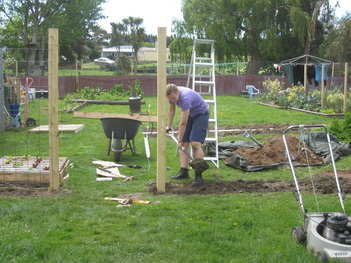
I decided where I wanted the garden bed to go and marked it out. My daughter dug up this strip and removed the turf (to make creation of actual beds easier later when the fence is in). Basically a strip was dug up from the location of each tall post out to each side, leaving the lawn as-is through what will be the gateway.
Two upright posts were dug in, so they are 2 metres above ground, and 70cm underneath. Spirit level essential to get them straight!

The single sheet of reinforcing mesh was used to make the trellis of the fences - after cutting 2.2 metres of it to make the high side (put up with fencing staples), the rest of it was cut in half and the offcuts put together to make the low-side fence, joined in the middle.
A waratah (metal fence post) was used behind the join so the pieces could be wired to it for stability. A length of the reinforcing mesh that was cut off was tidied up and then used like a wire, bent over the top of the post that forms the arch, and attached with fencing staples on both sides of the upright posts.
The tops of both fences, as well as in front of the waratah, are finished off with branches pruned from some trees on our property, giving it a more finished, rustic appearance, as well as adding rigidity to the trellising.
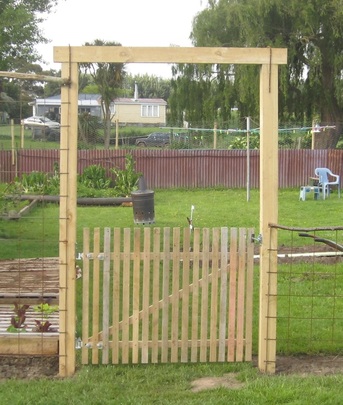
The gate is mounted on gudgeons with a butterfly latch. The latch is designed to close over a metal pipe type gate, so my husband found a short piece of metal pipe, cut a slit in it, and fitted it over the end slat in the right place.
The gate opens in either direction.
Unfortunately it took my clever retired sled dog all of two days to figure out how to open the gate, so I'm going to need to add a sliding bolt to the back of it to close it securely at night, but during the day this works great. She only opens it at night, as she knows she's not supposed to, and then either opens the next gate to go out into the paddock, or rummages in my compost bins.

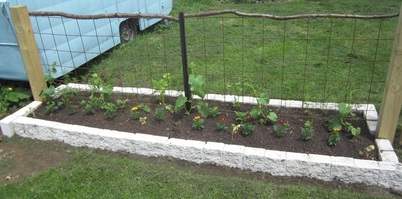
I'm really please with how this project turned out!
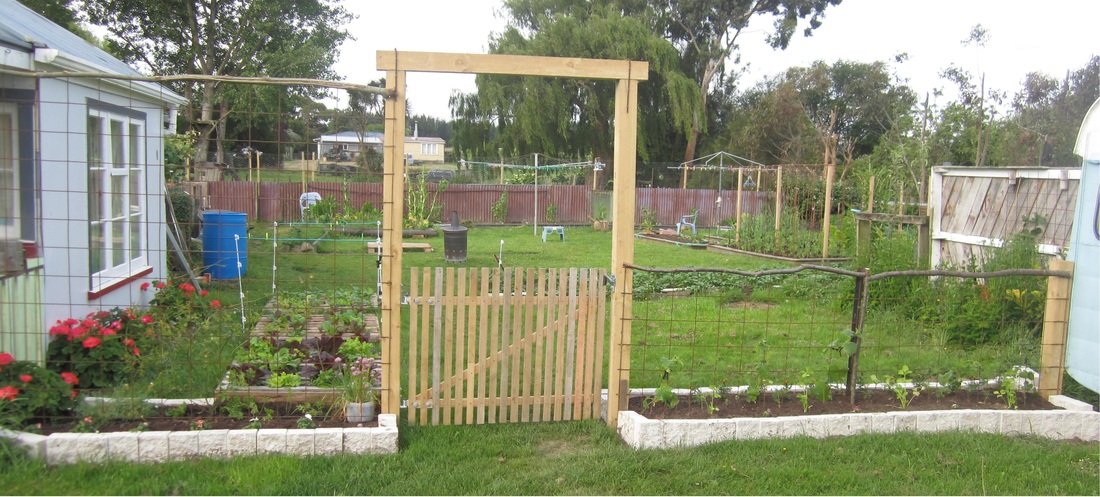
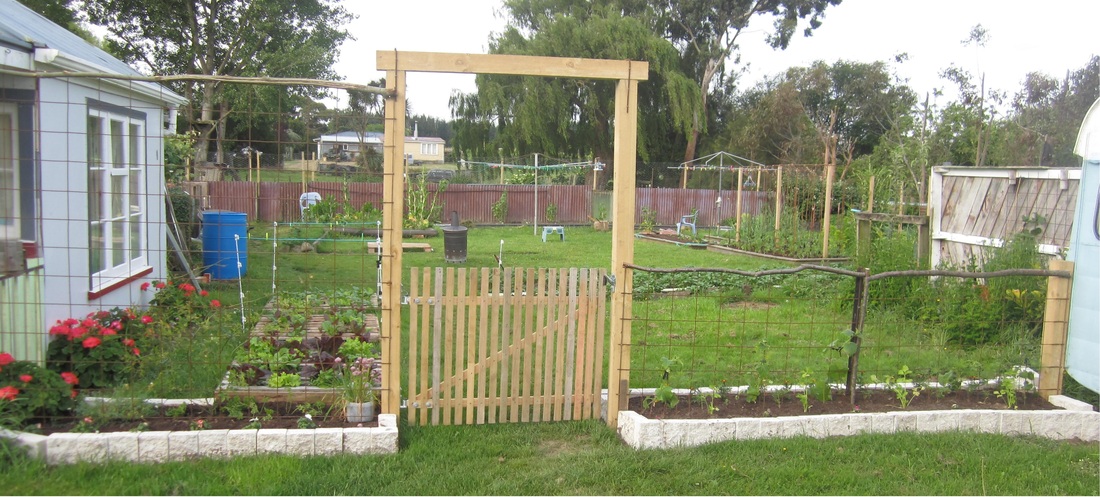
 RSS Feed
RSS Feed
